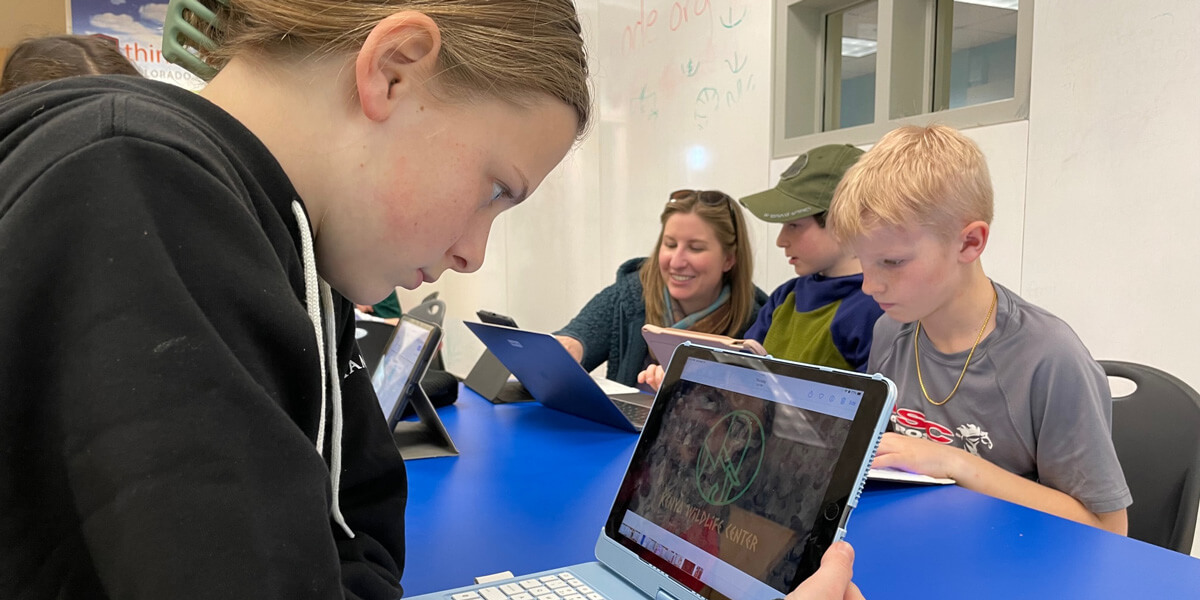What is on the minds of Colorado Academy’s Fifth Graders these days? You may be surprised to find out.
Why are people using plastic bags, bottles, and straws even though they know it’s polluting the ocean? How can people in Ethiopia suffering from water pollution and shortages get clean drinking water? Why do female athletes make less money than male athletes? What is the impact of social media on girls? How can we do a better job of treating horses that are involved in racing?
These are samples of the questions students are researching for their Voices of Change capstone projects in Fifth Grade classrooms and Lower School Wonder Workshop. But they are not just asking questions—they are going a step further.
“Voices of Change is a project that empowers children to take on problems that they see in the world,” says Fifth Grade teacher Sara Wachtel. “It gives them the opportunity to talk to experts and formulate innovative real-world solutions.”
“When learning has meaning and purpose, students can do anything,” adds Fifth Grade teacher Jessica Ohly. “When they believe their work could have impact on real world problems, they become very excited.”
The Voices of Change projects will culminate in late May with students doing a presentation in the Leach Center for Performing Arts, explaining their solutions to an audience of parents, teachers, and students. But before that day, they do months of research, interviewing, writing, problem solving, and critical thinking—and raise lots and lots of questions looking for answers.
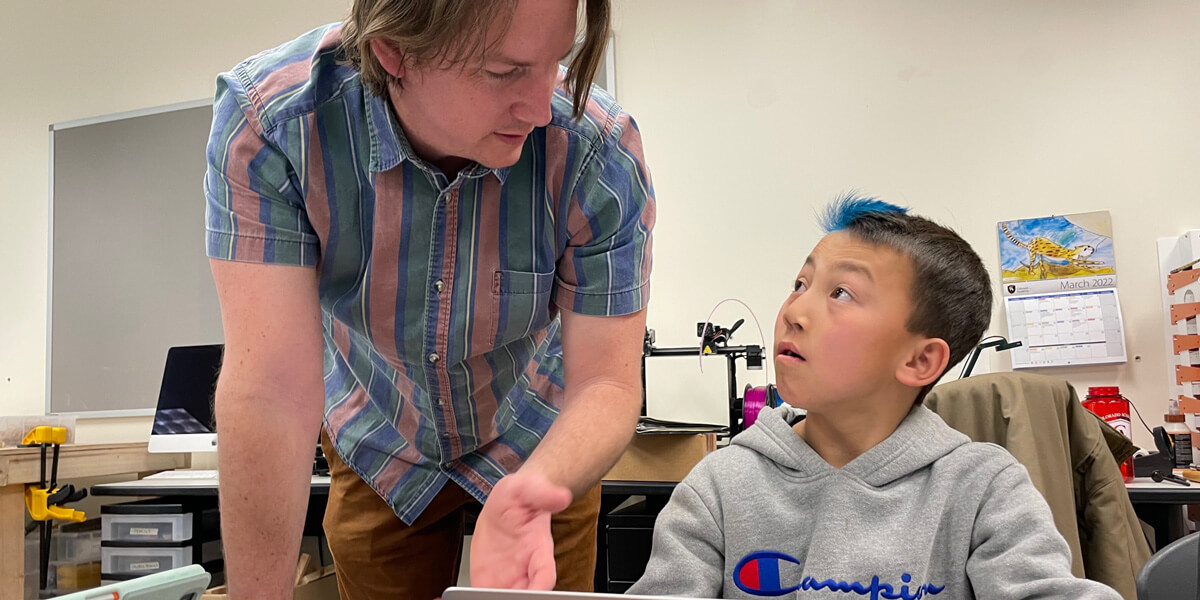
Fortunately, there are three classroom teachers and Travis Reynolds, who runs the Lower School’s Wonder Workshop, ready to help Fifth Graders discover or invent solutions by navigating the world outside their classroom.
“One of the great things I have seen come out of this is how our students now have learned to write emails and reach out to people at CA and outside the school to research their projects,” says Fifth Grade teacher Chelsea Grantham. “I love that they are seeing that there are all sorts of people with different careers in the world.”
“It’s extremely rewarding for me as teacher to see a Fifth Grader acting like a professional while having a Zoom call with the CEO of a company,” says Reynolds. “The students are passionate about these projects, and they have been persistent. That’s what happens when you give students choice.”
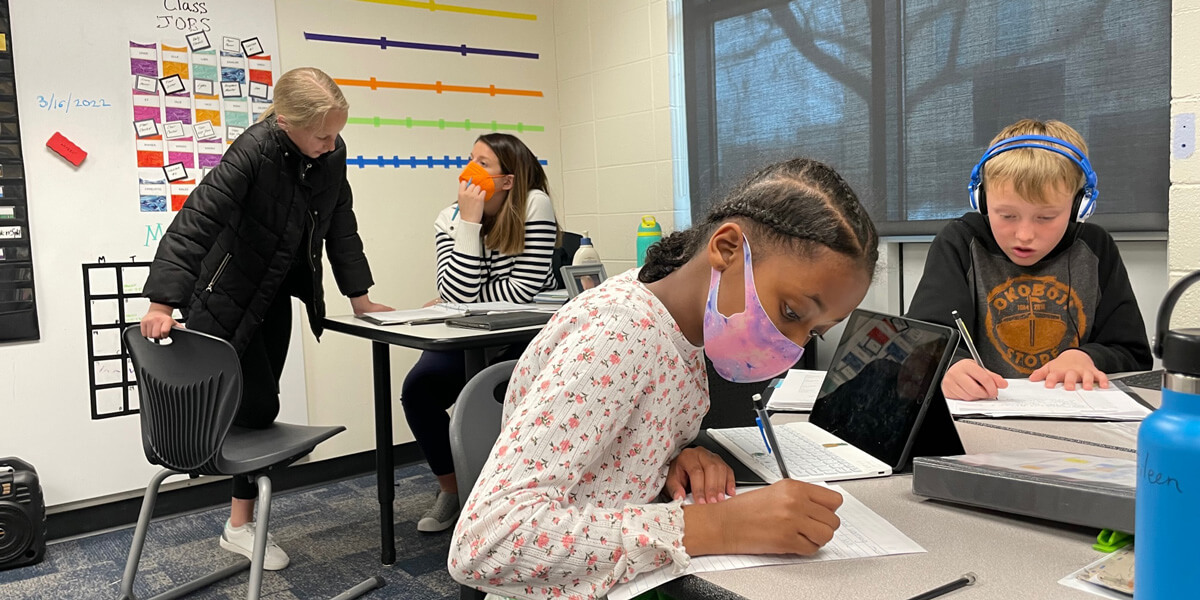
Listening to the voices
Voices of Change started last fall, with students talking to members of their community about problems in today’s world—with an eye toward developing solutions.
“They have so much exposure to news coverage that is negative,” says Grantham. “This gives them agency, the opportunity to enact change.”
Harrison Wynne thought about his grandfather, who is a veteran. That prompted him to become interested in providing housing for homeless veterans. His solution is to use 3D printers to build homes quickly and inexpensively. If that seems like a daunting task for a Fifth Grader, talk to Harrison.
“With Voices of Change, we are trying to fix the world,” he says. “We learn from our mistakes, and we learn from what we did right.”
Willa Ringham has a family connection to the World Wildlife Fund in Kenya. She feels strongly about the problem of poachers killing elephants for their tusks and rhinos for their horns.
“They are being killed for something they are born with,” she says. “We should do something about that, because without animals, the whole world would fall apart.” Her solution is the development of a rescue center for animals that are easily preyed on by poachers.
Annika Bhandari is asking the question, “Should students learn about racism?” Her answer is ‘yes,’ and she is taking the first step toward building a curriculum by creating a children’s book for early elementary grades that advocates kindness to all people. “I like embracing these tough topics,” she says.
After students identify the problem they want to tackle, they go through a series of steps. They brainstorm their solution and receive feedback on their thinking. They write a research paper to provide a foundation for their solution.
“We could limit the assignment to writing a research paper, but when they talk to an expert and start thinking about a solution, they light up,” says Ohly. “They learn research skills in a meaningful way.”
Students write emails contacting subject-matter experts, who can help them refine their ideas. They conduct interviews with the experts. They also write a persuasive speech intended to make others care deeply about their cause and understand why their solution will have an impact.
Throughout every step, Fifth Graders develop empathy for whomever or whatever may be affected by the problem they have identified, so they can more effectively create a solution. Much of that creativity takes place in the Wonder Workshop.
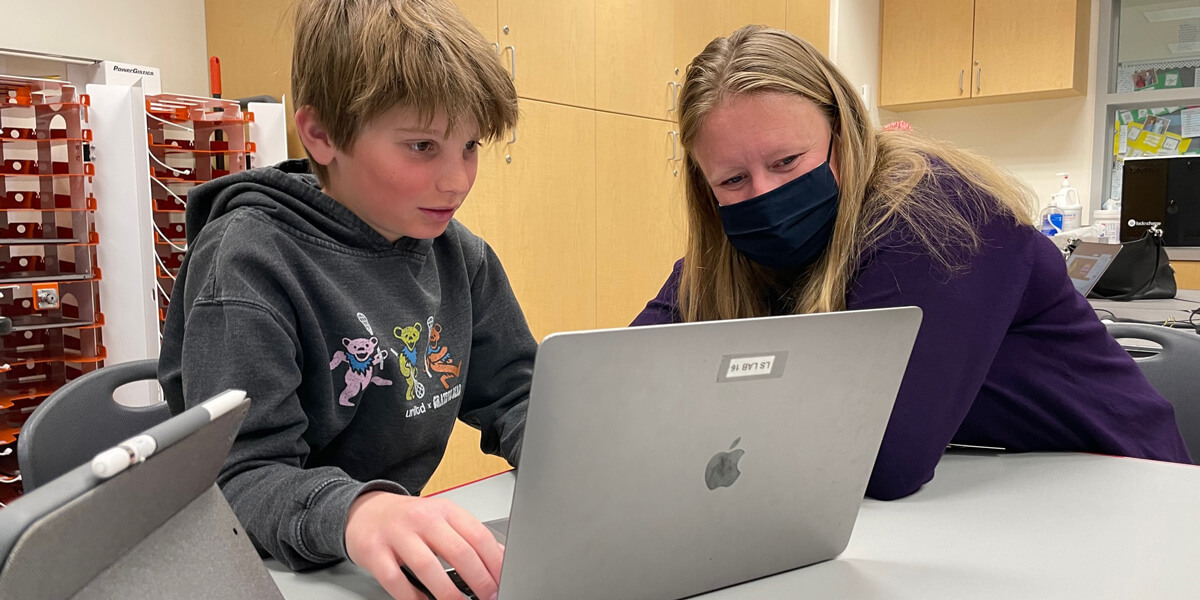
Working in Wonder Workshop
Travis Reynolds has a line of students, many of them holding their iPads, waiting for his attention. They bring him questions, and he, in turn, encourages critical thinking by asking them questions.
“What did you learn from that last step?” “How can I help you?” “Yes, it’s going to be hard, but it’s a worthy exercise.” “What did the contact you spoke with tell you?” “Do you think we need to keep looking for more information?” “See, you did it all by yourself.”
In Wonder Workshop, the Design Thinking process that is at the heart of Voices of Change informs every action between students and teacher. Reynolds is constantly challenging students to define problems, create innovative solutions to prototype and test, and understand the users of their solution.
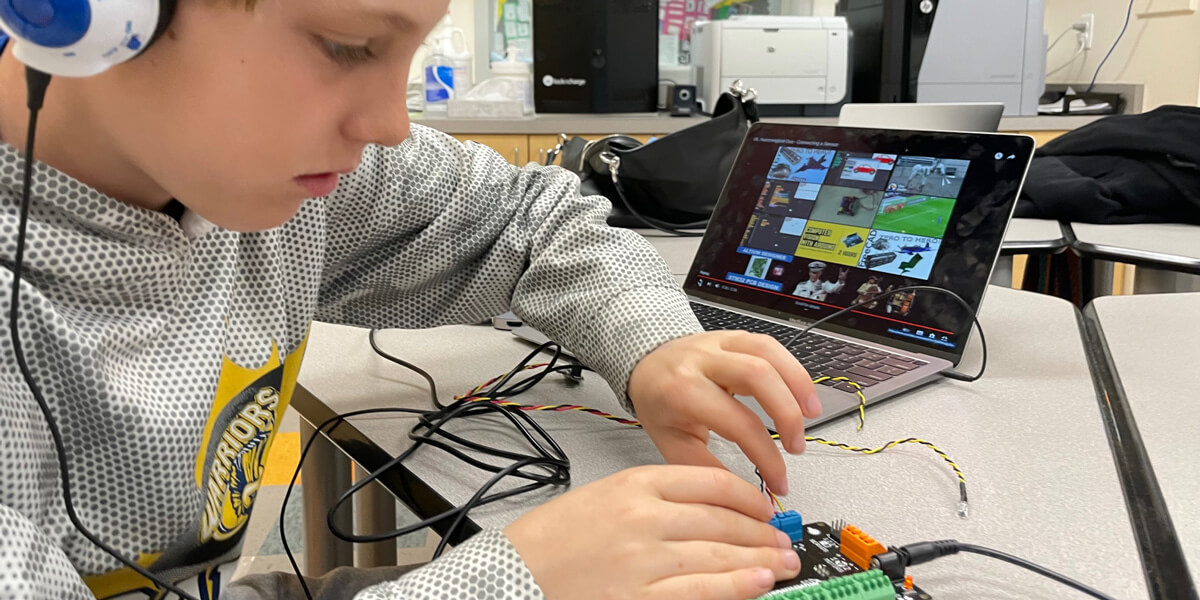
Cam Vath is researching the damage that light pollution is doing to bird migration and reproduction. His solution is an innovative sensor system that would keep lights in large city parks dark unless they sensed movement, and then they would light up and go dark sequentially. He is learning to program code to trigger the lights.
“I learned that I like coding!” he says. “I thought it would be super complex, but it isn’t, and now I think I would like to learn more about it in Middle School.”
Owen Thorpe is investigating how wildfires can destroy multiple homes in just days. His solution is a solar-powered drone with cameras that have thermal detection to identify fires that are just starting or have not been extinguished. He cannot contain his excitement. “I’m going to a fire station for an interview to see the drones they are using already!”
Lydia Blessing has asked the question, “If you walked into a museum dedicated to racism, what would you want to see?” Then, she is taking the next step and creating a virtual museum. Reynolds provides support for the technology that students must learn to implement their ideas: computer programming, 3D design and printing, website and app development, graphic design, and more.
“It all depends on the student and where the Design Thinking process takes them,” he says. “We have a full maker lab available with all the materials they need for prototyping.”
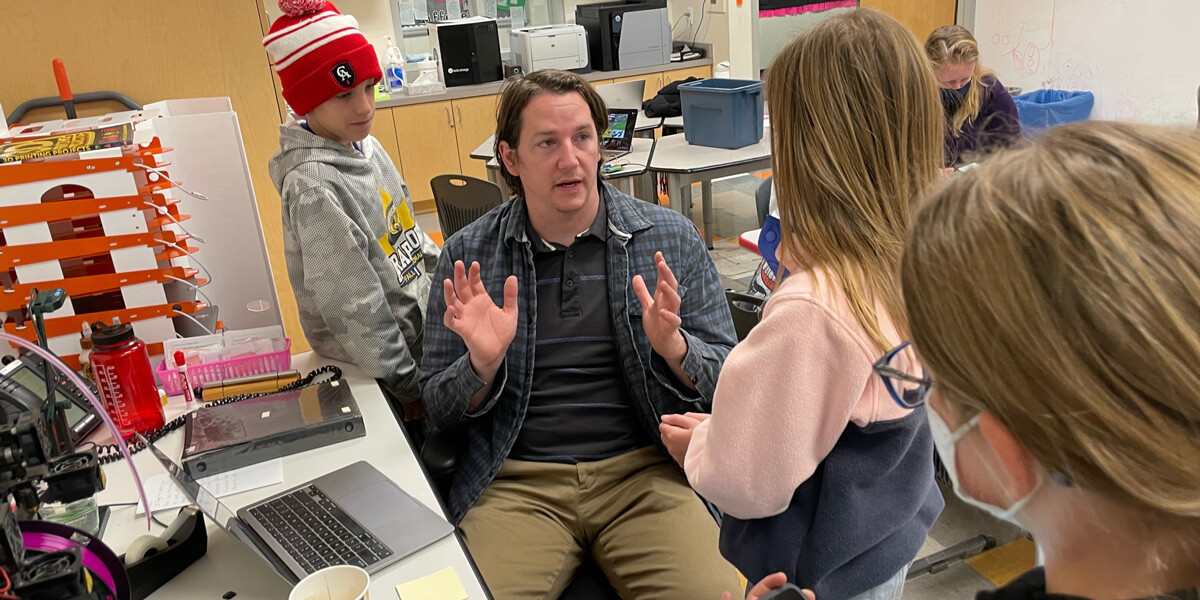
Reynolds says students are doing things well beyond what he expected. “I tell them, ‘We don’t expect you to save the world by May. We just want to see how far you get.’”
The Fifth Grade teachers are learning alongside their students. They say that they feel pride, excitement, and inspiration as they watch the Voices of Change projects evolve.
“These students are demonstrating that, even if you are very young, you can fight to bring change,” says Wachtel. “You are never too young to get involved.”
